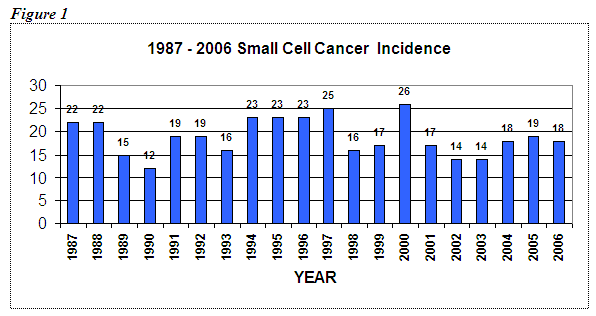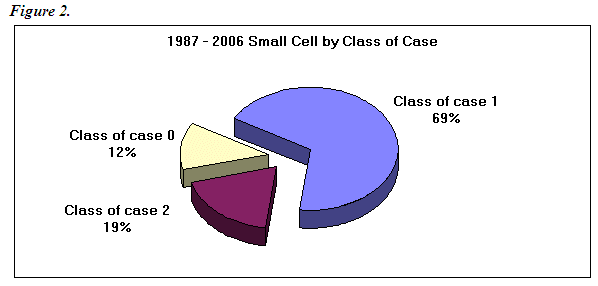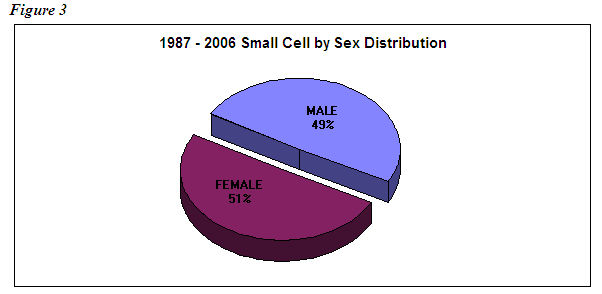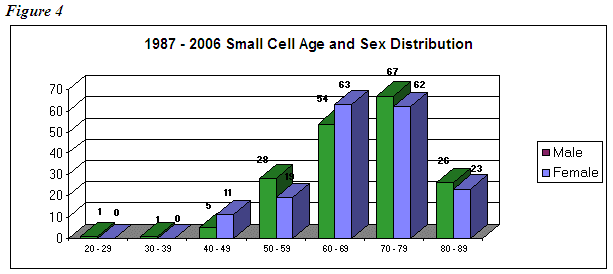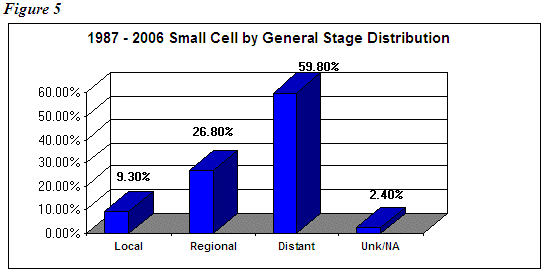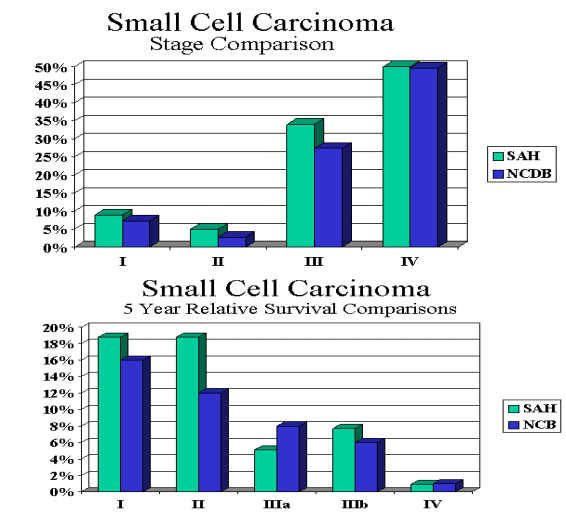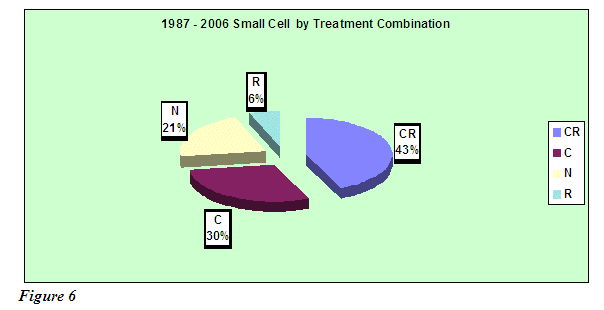|
2007 PATIENT CARE EVALUATION SMALL CELL CARCINOMA
Lung cancer is the second most commonly diagnosed cancer and the leading cause of cancer death in the US. The American Cancer Society estimates 213,380 new lung cancer cases and 160,390 death for both men and woman in 2007. Since 1987, more women have died each year of lung cancer than from breast cancer. Estimated cancer death for women in 2007 is 70,880 vs 40,460 breast cancer death.
The Cancer Committee decided to review Small Cell Lung Cancer from 1987 – 2006, for age, sex, staging, treatment distribution, and survival information. A total of 378 analytic cases were identified for data analysis. The numbers have been stable over the years. |
||||||||||||||||
|
|
||||||||||||||||
|
The majority of the patients were diagnosed and treated at SAH (69.15%)
|
||||||||||||||||
|
|
||||||||||||||||
|
Gender was evenly distributed 49.47% males (187) and 50.53% (191) females. |
||||||||||||||||
|
|
||||||||||||||||
|
Race distribution accounted for 93% (352) Caucasians and 7% (25) African American (NCDB was 88% White and 7% African American).
Most of the 378 patients were diagnosed between the ages of 60 and 79. |
||||||||||||||||
|
|
||||||||||||||||
|
Over 50% of patients reported a use of tobacco products and 38.6% reported a previous use. Only 3.7% were non-smokers at the time of diagnosis.
TNM Stage - Small Cell Carcinoma of the lung (SCL) behaves differently from the other types of lung cancer. In comparison to other types of lung cancer, small cell is a more rapid growing, and spreading form of cancer. This makes it more likely to metastasize and present in more advanced stages. Overall, only 9.30% of the cases reviewed by the Cancer Committee presented with localized disease. |
||||||||||||||||
|
|
||||||||||||||||
|
With modern chemo/radiation, survival in limited stage disease is 12-18 months median and for advanced stage, 6-9 months. Our data are comparable with national data.
|
||||||||||||||||
|
|
